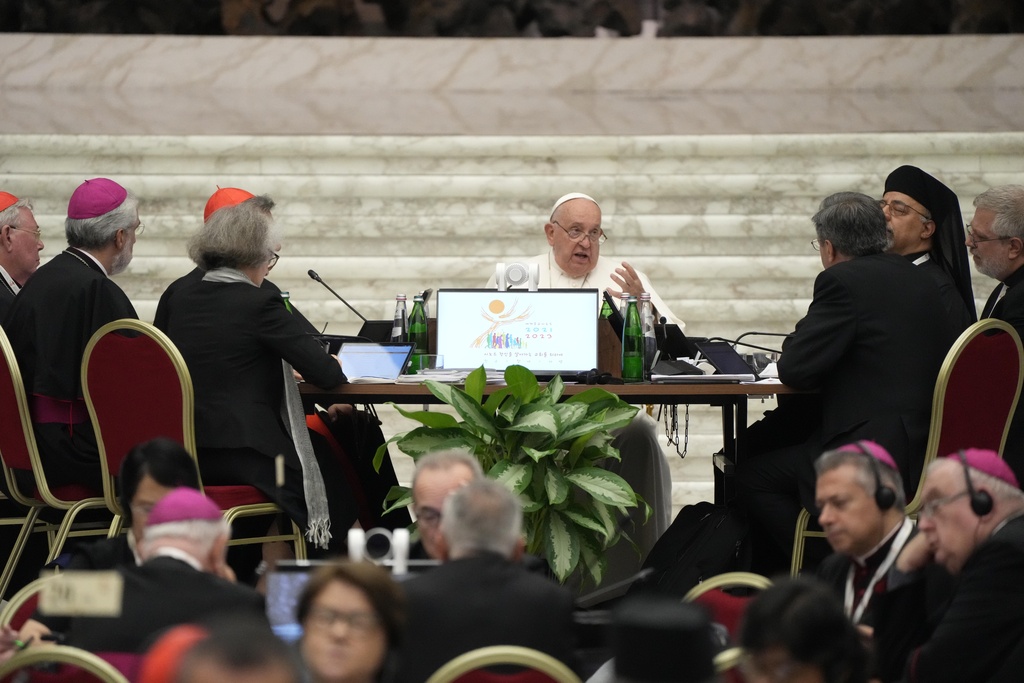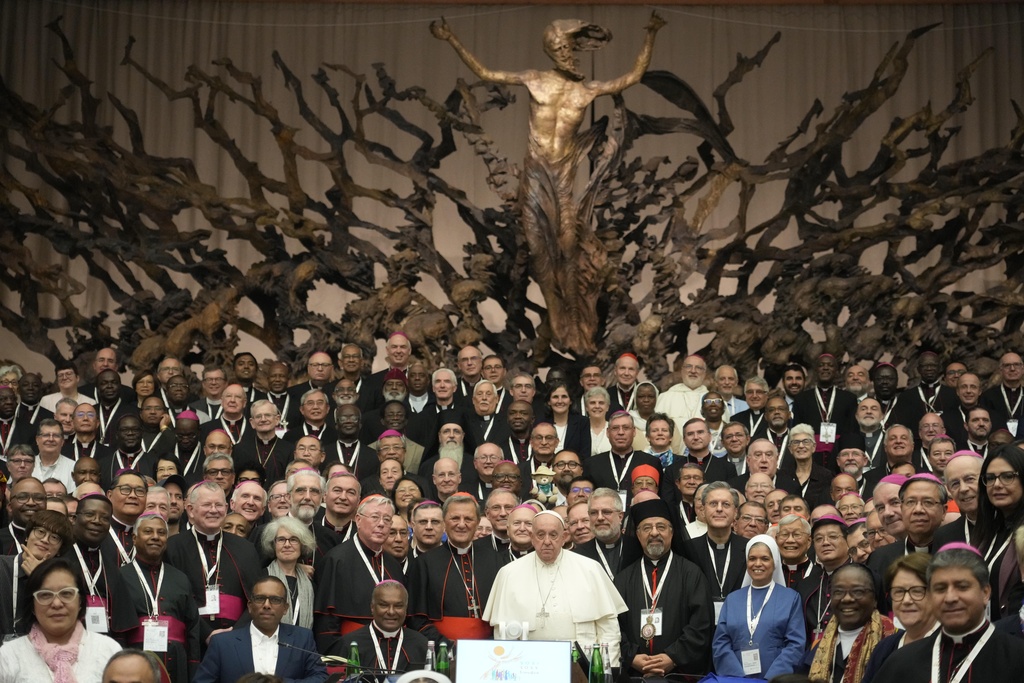Pope’s Synod Reforms Offer Limited Change on Women’s Roles \ Newslooks \ Washington DC \ Mary Sidiqi \ Evening Edition \ The Catholic Church’s multiyear synod reform closed with Pope Francis signaling openness to more women’s participation without immediate structural change. The synod’s recommendations did not include ordination for women, leaving advocates disappointed but sparking continued dialogue. Francis underscored unity and peace, refraining from a formal teaching document to allow for a flexible and open interpretation.

Pope’s Synod Reforms on Women’s Roles: Quick Looks
- Final Synod Outcome: The synod’s recommendations permit women more opportunities but exclude ordination.
- No Official Papal Document: Pope Francis has decided against codifying the synod’s recommendations.
- Call for Unity: Francis emphasized that the Church must model “living with differences” amid global conflict.
- Ongoing Dialogue for Women’s Roles: Conversations on women’s roles continue, but ordination remains a divisive issue.
- Vatican’s Stance on Timing: Cardinal Fernandez shared that Pope Francis believes ordination is “not ripe” for discussion.
- Mixed Reactions: Advocates express disappointment, while others worry ordination could affect the Church’s traditions.
Deep Look
At the core of the recommendations was the acknowledgment that women should be offered every opportunity already allowed under current Canon Law. However, this falls short of the more radical reforms some had called for, particularly around ordination to the diaconate. Francis’s decision not to release an official papal document solidifying these recommendations underscores his desire for open interpretation and ongoing dialogue rather than prescriptive reforms.
Pope Francis, explaining his approach, noted that the Church must embody peace amid today’s divisions, saying, “In this time of war, we must be witnesses to peace.” He pointed out the Church’s role in providing a model of harmony in an increasingly polarized world. In emphasizing peace and cohesion, Francis also highlighted the importance of ongoing discussions rather than a final decision on ordination. His approach reflects a balance between tradition and gradual adaptation, with a focus on allowing the Church community to “live with differences.”
Ordination Remains a Contentious Topic
One of the most controversial topics was the possibility of women deacons. Deacons, who can preside over weddings, baptisms, and funerals, perform some of the roles held by priests but cannot celebrate Mass. Advocates argue that permitting women in this role could help address the growing shortage of priests and better reflect the contributions of women in the Church. Yet, opponents caution that it could be a step toward ordaining women as priests, a tradition Pope Francis has consistently reaffirmed as male-only.
This position reflects the Vatican’s historical hesitance toward ordaining women. Since his papacy began, Francis has reaffirmed that ordination to the priesthood will remain an exclusively male vocation. While he has expressed appreciation for women’s contributions within the Church, he has been careful to differentiate between roles that could empower women in ministry and those that would involve ordination.
Varied Reactions and Continued Push for Equality
Many Catholic women and lay advocates were vocal about their disappointment with the synod’s limitations. Kate McElwee, the executive director of the Women’s Ordination Conference, expressed frustration, saying that the final document would be received with “disappointment and frustration” by many women globally. She noted that, while a “cultural shift” is evident, the pace remains slow for those hoping for more visible representation and authority for women in the Church.
McElwee’s concerns resonate with a broader movement of Catholics advocating for women’s equality in the Church’s leadership structure. Despite being essential to the operation of Catholic institutions worldwide—from schools to hospitals—women remain barred from the Church’s highest offices. In parishes and communities around the world, they often perform the lion’s share of work in ministries, teaching, and pastoral care, but their authority remains limited.
The paragraph addressing women’s roles was, in fact, the most contested in the synod’s final document, passing with a relatively narrow margin of 258 votes for and 97 against. The split vote highlights a divide within the Church’s leadership, with some bishops believing the language was too progressive, while others felt it did not go far enough. This division underscores the complexity of introducing reforms in an institution that values continuity with centuries of tradition.
Future Considerations for Women’s Roles
Although the synod’s recommendations have been finalized, discussions about the role of women in the Church are likely far from over. Cardinal Fernandez indicated that a special working group will continue to examine women’s roles, though its scope will not include the diaconate. He observed that women involved in pastoral work often expressed that the diaconate might complicate their roles, indicating that some women prioritize maintaining flexibility in lay ministry roles rather than seeking ordination.
Nevertheless, the synod process has succeeded in raising the visibility of women’s concerns within the Church. In its initial phase last year, the synod declared it “urgent” to ensure fuller participation for women in governance roles. While the recent conclusions have not directly addressed this urgency with concrete changes, they reflect a growing willingness within the Church to discuss women’s positions openly.
The conclusion of this synod marks an important, albeit incremental, step in the Catholic Church’s engagement with the question of women’s equality. For advocates pushing for deeper change, the outcome of the synod represents both a cultural shift and a frustration at the slow pace of reform. With no formal teaching document to enshrine the recommendations, Pope Francis appears to be leaving room for interpretation, allowing bishops and Church leaders to consider how best to implement these suggestions at local levels. The years ahead will likely see continued advocacy and discussion as women and their supporters seek pathways to deepen their roles within the Church.







